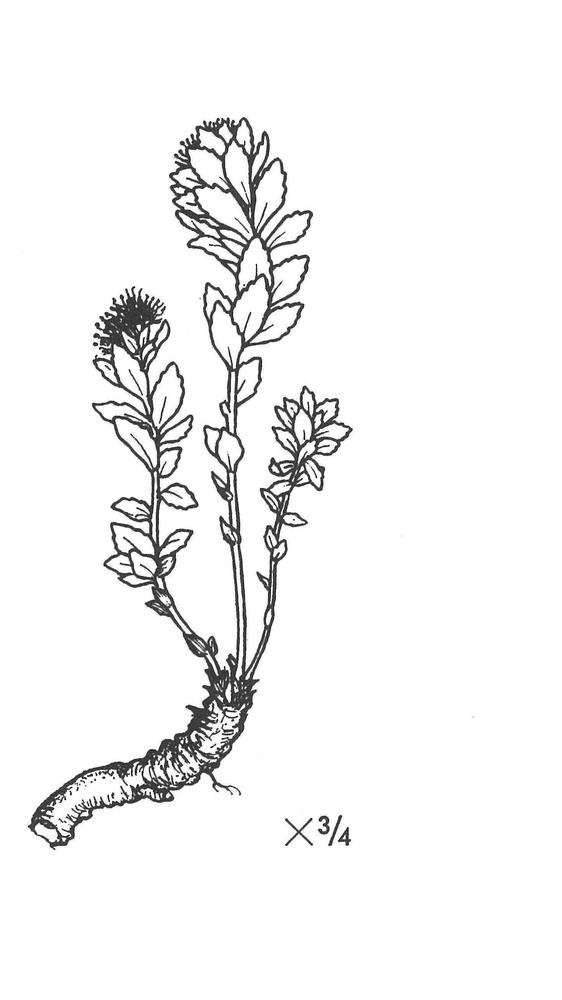| | Sedum rosea subsp. integrifolium (Raf.) Hult. |
| |
|
| Family | Crassulaceae — APG family: Crassulaceae |
| Synonyms | Rhodiola atropurpurea (Turcz.) Trautv., Sedum atropurpureum Turcz., Rhodiola alaskana Rose., Sedum frigidum Rydb., Rhodiola integrifolia Raf. |
| Description | Rhizome thick, fleshy, scaly, fragrant when cut; leaves ovate to oblong, dentate, glabrous and glaucous; stem with many leaves; flowers usually 4-merous, unisexual; male flowers with abortive carpels and 8 stamens; petals usually purple, rarely pink (Ogilvie Range) or yellow (Seward Peninsula). |
| Ecology | Scree slopes, rocky places; in the mountains to at least 2,135 meters. S. rosea described from the Alps of Lapland, Austria, Switzerland, and Britain; subsp. integrifolium from the Rocky Mountains. Broken line on circumpolar map indicates range of other subspecies or varieties. |
| Uses | Leaves and young shoots are eaten raw or boiled by the natives. The Siberian Eskimo also eat the rhizome boiled in seal fat, or with reindeer fat. (See color section. ) |
